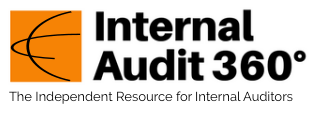
We all experience it. We all try to avoid it. Yet, inevitably, we all still have to deal with it.
The “it?” Tension and disagreement—even outright hostility—while just doing our day-to-day internal audit jobs.
As much as we try our best to foster good relationships with everyone in the organization, the internal audit job has some elements that can cause friction with others. It may be disruption to audit client’s jobs when we show up to do our important audit work. At times we will be the bearers of unwelcome news. We may disagree on an audit observation with the process owner. We may disagree with the CEO or other senior managers about the importance of internal audit or about the resources needed to run a successful internal audit function. Internal audit team members may disagree with each other on any number of aspects on any given audit. Any of these can cause tension. Often a combination of the above factors can create conflicts that must addressed.
Before I provide some insights on dealing with tension in the internal audit process from my own experiences, let’s turn to some outside help. When internal audit professionals ask me for advice on either delivering unwelcome news or getting along with difficult audit clients, I usually recommend two classic books: Fierce Conversations, by Susan Scott and The Courageous Messenger, by Kathleen Ryan, Daniel Oestreich, and George Orr. There are plenty of other books on the topic, but these two have stood the test of time.
Now let’s take a look at some options for consideration when three areas of tension and disagreement arise in the world of internal audit: when you can anticipate a disagreement coming from an audit client, when you are blindsided by a disagreement from an audit client, and when disagreements arise among internal audit team members.
Handling Disagreements You Can Anticipate
“There are things our gut knows long before our intellect catches on.”
– Susan Scott, from Fierce Conversations
Some topics and some audit clients will inevitably cause resistance. Perhaps it is one or more audit observations that will restrict someone’s ability to meet their goals, or it is a subject that will reflect poorly on someone’s leadership or management skills. Sometimes, it’s as simple as a relationship that you have struggled to adequately cultivate. But you know it: No matter how much you prepare or rehearse; no matter what you are going to say; you will meet resistance. You can sometimes see it coming from a mile away.
The best advice for these situations is to start with a phrase intended to diffuse the situation. Something like: “You probably are not going to be happy about this, but …” Or, “I know you might disagree, but let me explain how I came to this conclusion …” The trick here is that a power play is happening, and they will wish to exert power over you. They’ll refute your facts. They’ll have new information you haven’t considered. They’ll just be difficult or even nasty. Keep your cool and try to discern where they may be right, versus where they might just be getting defensive. But it’s important to listen to their objections, even if you don’t agree with them. Keep in mind that while we might know a lot about risk and internal control, we will never know as much about someone’s job as they do.
If the situation is not going well and you are at an impasse, offer to come back another time with an open mind and discuss things factually. If they cannot separate emotion from fact, then you are left with doing your job and reporting the facts as they are. But you did anticipate the disagreement, and you did your best to navigate around it. Importantly, once again, keep your composure. And, only as an absolute and desperately avoided last resort, go over their head to a more senior manager in the department.
The Disagreements that Blindside You
“Life is full of surprises, but the biggest one of all is learning what it takes to handle them.”
–Deborah Wiles, children’s book author
We’ve all been there. We are fully prepared, have our facts down cold, and the audit client has not had any issues up to now. We’ve even been completely transparent so that nothing will come as a surprise. And then … boom. Out of nowhere, completely unexpectedly, the client voices strong disagreement. We’re usually left with a mouth agape expression and immediately put on the defensive. Don’t you just hate that?
You must exercise cool in the moment, and as a friend and colleague would say: “Use your best ninja tricks.” Don’t get defensive, don’t raise your voice, don’t try to beat someone down with facts. That is a sure way to lose the argument and destroy a relationship. Instead, ask questions.
For example: “Wow, I thought we were in agreement before, can you tell me more about that?” Or, “I am pretty sure I have my facts lined up, what am I missing?” and so on. If necessary, just back out of the discussion before it becomes a confrontation. Say something like: “Let me think about what you’ve said some more, and we can schedule a later time to discuss it further.”
After you walk away and have time to cool down and think about it, try to diagnose why the pushback came as such a surprise. Perhaps you had some facts wrong; perhaps they just didn’t hear you right; perhaps they were having a bad day; or perhaps they’re worried about what their boss may think with such a finding or issue? Perhaps their bonus or job is already at risk.
When we are blindsided with aggressive push-back, it is wise to assume we may have gotten something wrong. Listen to what the person has to say and revisit your facts. Redouble your efforts, revisit your approach, and go at it again.
Those Disagreements Within Your Audit Team
“The aim of argument and of discussion, should not be victory, but progress.”
– Joseph Joubert, moralist and essayist
Are you part of an internal audit team that has spirited discussions, respectful disagreements, and people who don’t always get their way, but go along with the majority? If so, great. All that is actually extremely healthy.
Isn’t it funny that we claim to hire people for their ability to think, and then some organizations get all twisted up when these smart people exercise their intelligence and voice different views? Sounds dumb, right? But that’s the way some organizations work, and how some internal audit departments work, too. As U.S. General George S. Patton once said: “If everyone is thinking alike, then someone isn’t thinking!”
So, let’s accept that disagreement within your internal audit team is a good thing. But if we don’t manage disagreement in some proper ways, then it may quickly devolve into a very dysfunctional work group. The trick is to actively encourage disagreement and then manage that disagreement so that it’s productive and not destructive.
First, you need to create an environment where everyone can find their voice. Some people are loud, boisterous, and first to speak, regardless of topic. Others need to think about what they want to say before they say it, or are naturally quiet. You might need to ask them what they think or encourage them to voice their views. Everyone needs to have a safe space to speak their mind and voice disagreement.
Disagreement, when voiced, must be done in a respectful way. And how people react to that disagreement must also be respectful. The chief audit executive or internal audit leader sets the tone, and the CAE should not always be the first to speak. It can be intimidating when the CAE always speaks first because then others might hold back differing views and chime-in only if it feels safe. That’s not an approach that cultivates constructive disagreement.
If people are not behaving respectfully, the CAE needs to address that, preferably in private. The internal audit leader also needs to make sure that quieter voices get invited to the conversation and get their time to speak. Nothing is more rewarding to these folks than to turn to them and say something like “Jane (or Jack) you’ve been quiet for a bit, what do you have to say on this?”
At the risk of repeating an extremely crucial point, it is up to the CAE to set the tone, encourage respectful disagreement, and put a quick end to any destructive behaviors. Praise publicly and chastise privately.
Disagreements Can be Healthy
“If everyone is thinking alike, then someone isn’t thinking.”
—George S. Patton, U.S. General
Organizations and internal audit teams have personalities, and those personalities encourage or discourage disagreement differently. Artificially requiring everyone just get along is counterproductive. Internal audit staffers will soon feel that their opinions aren’t respected. They may even remain quiet on important issues they have observed. Respectful disagreement should be encouraged.
The goal is not to avoid disagreements, but to disagree professionally and not lose respect for any of the parties having a spirited conversation.
Internal auditors have jobs that will identify things that are sometimes difficult to hear. We shouldn’t avoid disagreement; but we should wisely avoid outright conflict and hostility. ![]()
Hal Garyn is Contributing Editor at Internal Audit 360°, and Managing Director and Owner of Audit Executive Advisory Services, LLC based in FL.


excellent piece
Hardest thing you will ever have to deal with when you take on the business unit. Mr NO is not popular but it is essential to have these experts as a front line of defense.
Nice insight.